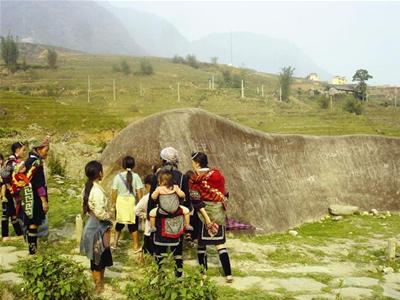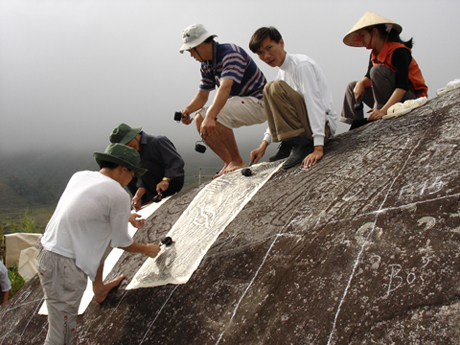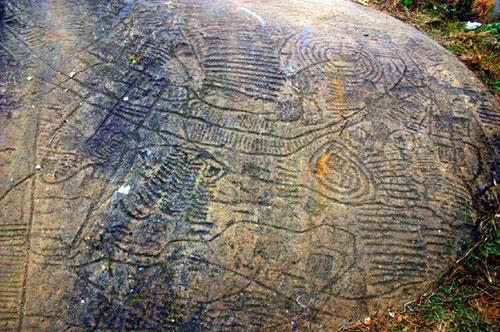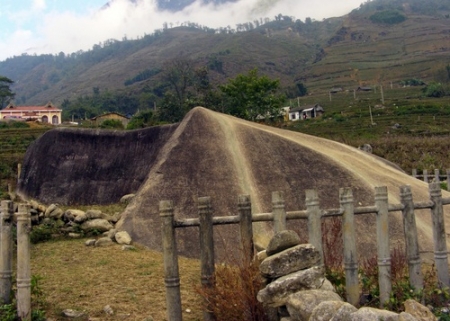An ancient rock field on which there were carved images lying among terraced fields of ethnic minorities was discovered in Sapa.
Hoa stream runs along Muong Hoa valley to Lao Chai, Ta Van, and Hau Thao communes… Right at this place is a strange carving area stretching through the mountain ranges.
Spreading over 4 km long, 2 km wide with at least 159 rocks enclosing mysterious images, the rock field used to be the research area of many scientists come from Vietnam, Russia, France, Australia… Most of big rocks with beautiful carvings concentrate on Pho village. Especially the carvings of human in various postures: image of a person opening the arms with halo around his round head, image of persons holding hands together, or upside down person, or the couple whose genitalia connect with each other as the expression of sinh thuc khi (“sinh” means give birth, “thuc” means arise,”khi” means tools) religion on the pictures of Dong Son bronze drum. There are 11 styles of strange human images. Most of scientists supposed this was a big heritage of mankind. Not only did it have great value in and spirit but also was a mysterious massage left by ancestor for the following generations.
According to Professor Le Trong Khanh, an expert in “ancient Vietnamese language”, offered different decoding on Sapa ancient rock field and confirmed: “The pictures on the rocks in Sapa is a huge set of book carved in ancient graphic letter “. And Professor Diep Dinh Hoa and his colleagues divided the carvings into six fundamental types and came to conclusion: “These pictures belong to different ages. However, if we take a serious look at sun symbols, particularly the image of curved-roof stilt house which looks like an upside down boat, we will realize that it has something similar to Dong Son culture 2,300 to 3,000 years ago. In such a way, we make a question that whether the owner of this ancient culture is also the ancient Vietnamese in Dong Son age?”
According to dedicated idea of a cultural leader in Lao Cai province, the mysterious pictures on Sapa ancient rock field could be the works of many tribes in various ages. They painted the simple or complicated pictures on the rocks to express ying and yeang religion. That is outlook-on-life mark of many people in different cultural classes. They could be Dao or Mong people. In fact, this theory was proved. In the preference “Archaeology Information” taking place in Hanoi in 2000, the archaeologists who used to did research in Phong Tho (Lai Chau), Meo Vac (Ha giang) provided the astonishing information about Sapa ancient rock field: many similar rock fields were found in Phong Tho and Meo Vac. If the research is implemented on a larger and more extensive area, the above information will be the key for the mysterious door to ancient rock field in Sapa.



